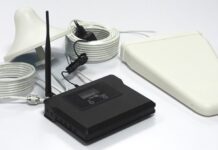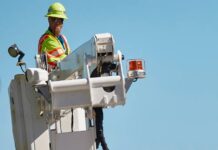Ensuring the reliability of telecom networks in harsh environments requires innovative solutions. Telecom operators face significant challenges, from extreme weather conditions to accessibility issues. Rugged shelters provide essential protection for critical telecom infrastructure, ensuring uninterrupted service.
In telecommunications, maintaining a reliable network in remote or challenging terrains is paramount. Extreme weather, such as intense storms and temperature fluctuations, can disrupt connectivity and result in costly repairs. Operators must prioritize robust infrastructure to withstand these adversities. Among these solutions, a radar shelter plays a pivotal role in safeguarding vital telecom equipment.
Challenges in Unforgiving Environments
Operating telecom networks in areas with harsh climates presents numerous obstacles. The relentless onslaught of extreme temperatures, high winds and frequent storms poses significant threats to telecom hardware. These conditions not only cause system outages but also lead to service interruptions and escalating repair costs. Addressing these issues requires implementing protective measures that endure the elements without compromising connectivity.
In such environments, your network infrastructure’s resilience is constantly tested. Rapid temperature changes can cause materials to expand and contract, leading to potential structural weaknesses over time. High winds and hail can damage external components, while dust and moisture infiltration can harm sensitive electronics. The need for solutions that offer unwavering protection is therefore critical.
The deployment of protective enclosures becomes essential for maintaining operational continuity. These structures are engineered to shield equipment from environmental hazards, ensuring that your network remains robust and reliable. By investing in durable solutions, you mitigate the risks associated with operating in challenging terrains.
Leveraging a Radar Shelter for Enhanced Protection
The implementation of secure and weather-resistant structures is crucial for housing telecom gear effectively. A radar shelter offers a controlled environment, protecting sensitive components from moisture, dust and temperature fluctuations. Such shelters boast modular designs and quick deployment capabilities, making them ideal for remote locations where infrastructure support is minimal.
These shelters are constructed with sturdy materials that ensure longevity while reducing maintenance overheads. The modular nature allows for swift assembly and disassembly, which is particularly advantageous when addressing immediate operational needs or responding to evolving network demands. The emphasis on durability means these shelters can withstand even the harshest conditions without succumbing to wear.
What’s more, the adaptability of these enclosures means they can be tailored to fit specific site requirements. By choosing the right specifications, you ensure optimal protection for your equipment while simultaneously minimizing potential downtimes associated with adverse weather events.
Key Features to Consider
When selecting a protective enclosure, several key features should be prioritized. Thermal insulation is critical as it helps maintain stable internal temperatures despite external fluctuations. This ensures that sensitive electronic components operate within optimal ranges and reduces the risk of overheating or freezing.
The durability of the exterior materials is equally important. Corrosion-resistant coatings and materials capable of withstanding strong winds or hail provide an additional layer of security against environmental challenges. Opting for shelters that offer rapid setup capabilities minimizes downtime during installation or relocation processes.
Furthermore, scalability should not be overlooked. Flexible floor plans and expansion modules allow you to adapt to future network needs without incurring costly overhauls or replacements.
Best Practices for Deployment
Ensuring successful deployment involves thorough site assessments that include terrain analysis and climate studies to determine appropriate housing specifications. Training local technicians in installation and maintenance processes is also vital to guarantee long-term performance.
Protective enclosures are indispensable in addressing the challenges faced by remote telecom operators. Their robust and adaptable designs ensure consistent connectivity despite adverse conditions. Continued exploration of shelter solutions will safeguard telecom assets and maintain reliable service delivery for end users.




















